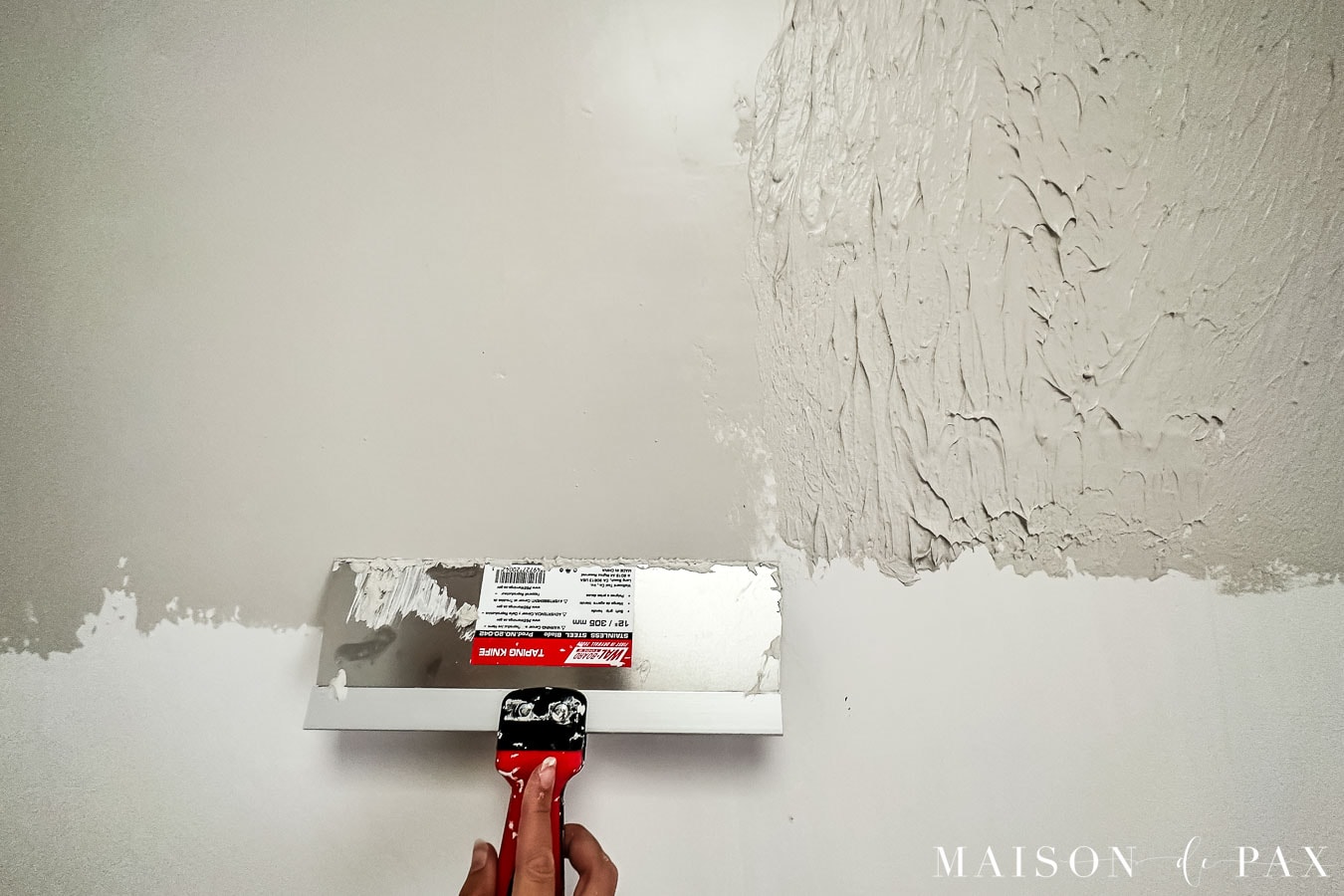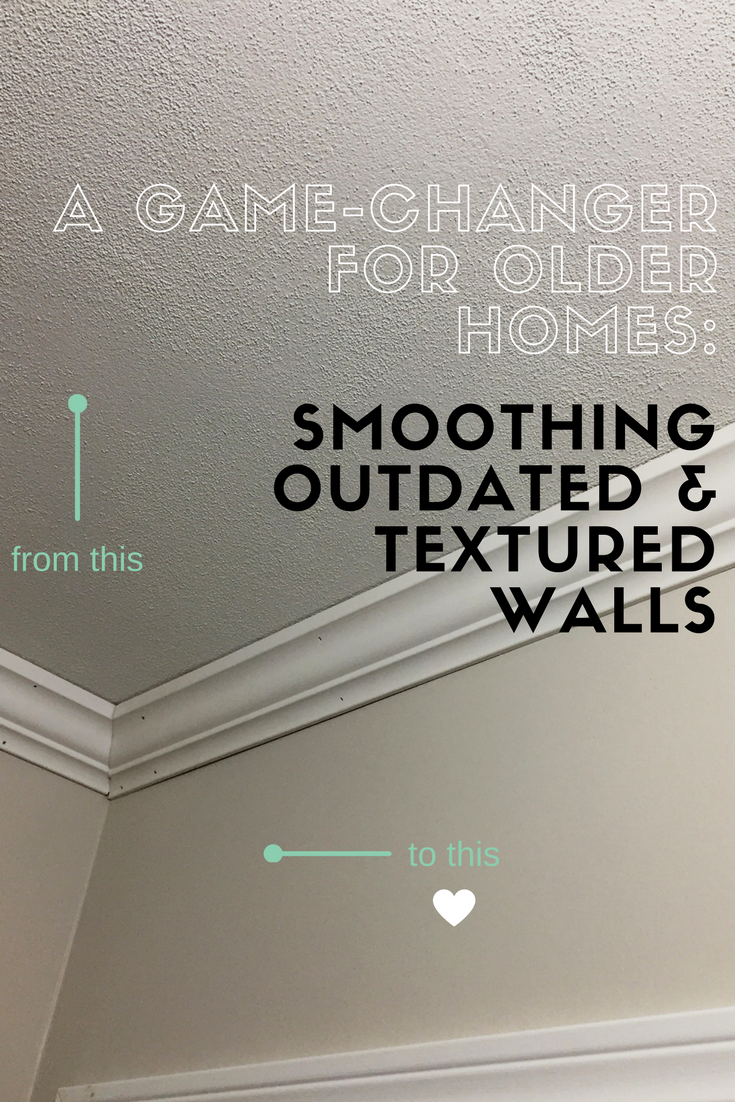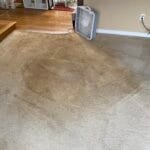Are you contemplating a home renovation or a fresh coat of paint and find yourself stuck between choosing smooth or textured walls? You’re not alone.
This decision might seem simple at first, but it can significantly impact the ambiance, maintenance, and even the resale value of your home. Picture yourself entering a room where the walls either whisper sophistication or shout character. Which speaks to you?
Understanding the nuances between smooth and textured finishes can transform your space from ordinary to extraordinary. Are you drawn to the sleek, clean look of smooth walls, or do the unique, tactile qualities of textured walls pique your interest? Each option offers distinct advantages and potential drawbacks that align with different lifestyles and preferences. Curious to learn how your choice can influence the aesthetics and functionality of your home? Dive into this article to discover which wall finish is the perfect fit for your personal style and practical needs.

Credit: www.maisondepax.com
Design Aesthetics
Smooth walls offer a clean, modern look, making spaces feel open and bright. Textured walls add depth and character, creating a warm, inviting atmosphere. Both styles can enhance a room’s aesthetic, depending on the desired ambiance.
Design aesthetics play a crucial role in shaping the ambiance of a space. Whether you’re renovating a room or building a new home, the choice between smooth and textured walls can significantly impact the overall look and feel. Each option has its unique appeal, catering to different tastes and styles. But how do you decide which one suits your design vision best?Visual Appeal Of Smooth Walls
Smooth walls offer a clean and modern look that appeals to many homeowners and designers. They serve as a perfect blank canvas, making it easy to switch up your decor without changing the walls. This versatility allows you to experiment with bold colors or intricate patterns, knowing the walls won’t compete for attention. You might remember visiting a friend’s minimalist apartment where smooth walls highlighted her vibrant artwork. This simple design choice made her space feel open and airy. Smooth walls tend to reflect more light, creating a sense of spaciousness, which is ideal for smaller rooms.Charm Of Textured Walls
Textured walls bring character and depth to a room, offering a tactile experience that smooth walls can’t replicate. They are perfect for creating a cozy and inviting atmosphere, especially in spaces like living rooms or bedrooms. The varied surfaces catch light differently, adding subtle shadows and highlights that change throughout the day. Think back to a warm, rustic cabin you once stayed in, where the textured walls added to the cozy charm. This design choice can hide minor imperfections, making it a practical option for older homes. Textured walls often complement natural materials like wood and stone, enhancing an earthy and organic aesthetic. When deciding between smooth and textured walls, consider how each option aligns with your personal style and the mood you want to create. Do you prefer the sleek simplicity of smooth walls or the inviting warmth of texture?Practical Applications
Choosing between smooth and textured walls can greatly affect your space. Each wall finish has its own practical applications. Let’s explore how these surfaces fit different rooms and interior themes.
Suitability For Different Rooms
Smooth walls are perfect for kitchens and bathrooms. They are easy to clean and maintain. Textured walls suit living rooms and bedrooms. They add warmth and character to the space. Smooth surfaces can enhance modern and minimalistic designs. Textured walls work well with rustic and traditional styles.
Impact On Interior Themes
Smooth walls create a sleek look. They complement contemporary themes. They enhance the feeling of openness and space. Textured walls add depth to interior designs. They bring a cozy, intimate vibe to a room. Smooth finishes fit with clean lines and bold colors. Textured surfaces pair with earthy tones and natural elements.
Maintenance Considerations
Choosing between smooth and textured walls affects maintenance needs. Each type has unique considerations. Understanding these differences helps keep walls looking their best. Let’s explore maintenance for both types.
Cleaning Smooth Surfaces
Smooth walls are easy to clean. Dust doesn’t stick as much. Use a soft cloth or sponge. Mild detergent works well for stains. Avoid harsh chemicals. They may damage paint. Regular dusting prevents buildup. Smooth walls often look fresh with little effort.
Upkeep Of Textured Finishes
Textured walls need more care. Dust settles in crevices. A vacuum with a brush attachment helps. Gently clean with a damp cloth. Avoid soaking the wall. Water may damage texture. Use a mild cleaner for tough spots. Regular attention keeps them looking good. Touch-ups might be needed over time. Textured walls can chip or crack. Monitor for any damage.
Cost Implications
Choosing between smooth and textured walls affects your budget. Each style has its own cost implications. Smooth walls often require more preparation. Textured walls involve different techniques. Understanding these costs helps in decision making.
Budgeting For Smooth Walls
Smooth walls need a flawless finish. This demands more time and materials. Professionals spend hours sanding and priming. These steps ensure a perfect surface. Labor costs can be high. Paint application must be precise. This further adds to expenses.
Expense Of Textured Designs
Textured walls have varied costs. Techniques like stucco or plaster need skilled workers. Materials for texturing differ greatly. Some textures use special tools. Others might require unique compounds. The complexity of the design affects pricing.
Simple textures cost less. Complex patterns increase the budget. Custom designs might involve higher expenses. Overall, textured walls offer flexibility in cost. Choose based on your financial plan.
Durability Factors
Understanding the durability of wall finishes is essential. It ensures you choose the right one for your space. Both smooth and textured walls have unique durability characteristics. This affects their longevity and maintenance needs. Knowing these factors helps in making an informed decision. Let’s explore the durability aspects of each.
Longevity Of Smooth Walls
Smooth walls often have a sleek finish. This type of surface is easy to clean and maintain. Dust and dirt do not cling easily. This keeps them looking fresh for years. Regular cleaning extends their life significantly. Smooth surfaces are less prone to wear and tear. This makes them a long-lasting choice for many homes.
Resilience Of Textured Surfaces
Textured walls offer a unique aesthetic appeal. They are known for their ability to hide imperfections. This feature makes them resilient to minor damages. Small scratches or dents remain hidden in the texture. Textured finishes can withstand heavy traffic areas better. Their durability makes them suitable for busy households. They also add a layer of soundproofing to rooms.

Credit: thepaintfactorypdx.com
Acoustic Properties
Smooth walls reflect sound more efficiently, enhancing clarity in a room. Textured walls diffuse sound, reducing echoes and creating a softer atmosphere. Both have unique acoustic impacts, influencing the overall sound experience in a space.
Acoustic properties are vital in determining the ambiance of your space. Ever noticed how some rooms echo while others feel acoustically balanced? This isn’t just due to size or furniture; the texture of your walls plays a significant role. Whether you’re designing a music studio or just trying to improve your living room’s comfort, understanding how wall textures affect sound can be your secret weapon.Sound Absorption Of Textures
Textured walls can act like tiny sound sponges. They absorb more sound waves compared to their smooth counterparts. Picture walking into a room with textured walls after a long day. The room feels quieter, calmer, almost like it’s wrapping you in a cozy blanket. This is because the textures break up sound waves, reducing noise levels and improving acoustics. Think of spaces where noise reduction is a priority, like a home office or bedroom. Textured walls can help you achieve the serenity you crave. Next time you’re choosing wall finishes, consider how sound absorption might enhance your everyday experience.Echo Effects In Smooth Spaces
Smooth walls, on the other hand, can be a bit like a sound magnifier. They reflect sound waves, sometimes creating an echo effect. Imagine chatting with friends in a room with smooth walls. You might notice your voices bouncing back at you, creating a lively, vibrant atmosphere. This can be ideal for spaces where you want to keep energy high, like a dining room or kitchen. But remember, too much echo might become overwhelming. Have you ever tried watching TV in a room where every sound seems amplified? It can be distracting, even annoying. Smooth walls can offer a sleek look, but they need careful acoustic planning to ensure they don’t disrupt your activities. As you plan your space, consider how the texture of your walls might impact your daily life. Does your room need calming sound absorption, or do you want to embrace the echo for a dynamic vibe? Balancing these acoustic properties can transform the way you experience your home. What will your walls say about you?Personal Preferences
Smooth walls give rooms a sleek appearance. Textured walls add depth and character. The choice depends on personal style preference.
When deciding between smooth and textured walls, personal preferences play a pivotal role in the choice. Each type offers unique characteristics that can influence the overall feel of your home. Whether you lean towards a sleek, modern look or a more rustic, cozy feel, your decision should align with your lifestyle and personal taste.Choosing Based On Lifestyle
Think about how your walls will interact with your daily life. If you have young children or pets, smooth walls might be easier to clean and maintain. Textured walls, while beautiful, can sometimes trap dust and grime, requiring a bit more upkeep. Consider your home’s overall design and functionality. Do you entertain often or prefer a serene, minimalist space? Smooth walls can offer a blank canvas, enhancing open, airy spaces. Textured walls, on the other hand, add depth and warmth, which can make a space feel more intimate.Influence Of Personal Taste
Your walls should reflect your personal style. If you love contemporary design, smooth walls might be your preference, providing a clean backdrop for bold decor and artwork. Textured walls can complement a more eclectic or traditional style, adding character and interest to any room. Reflect on your past experiences with different wall types. Did you find a textured wall in a friend’s home particularly inviting? Or perhaps you appreciated the simplicity of smooth walls in a modern apartment? Let these experiences guide your decision. Ultimately, it’s about what makes you feel most at home. Do you envision a space that encourages creativity and expression, or one that promotes calm and simplicity? Your walls are a canvas for your life; choose what resonates with your vision.
Credit: alittlekooky.com
Frequently Asked Questions
What Are The Benefits Of Smooth Walls?
Smooth walls create a modern look. They are easy to clean. Paint goes on smoothly.
Why Choose Textured Walls For Home Decor?
Textured walls hide imperfections. They add depth. They create visual interest in a room.
Are Smooth Walls More Expensive To Maintain?
Smooth walls require regular cleaning. Dust shows easily. But they are less costly to repair than textured ones.
Do Textured Walls Affect Room Acoustics?
Yes, they can. Textured walls absorb sound. This reduces echo and noise in a room.
Which Is Easier To Paint: Smooth Or Textured Walls?
Smooth walls are easier to paint. They require less paint. The finish is more even.
Conclusion
Choosing between smooth and textured walls depends on your style preference. Smooth walls offer a clean and modern look. They are easier to paint and clean. Textured walls add depth and character. They can hide small imperfections. Both options have their unique charm.
Consider your home’s vibe and maintenance needs. Smooth walls suit minimalistic designs. Textured walls fit more traditional or rustic spaces. Think about your lifestyle and aesthetic goals. Make a choice that complements your home. Balance beauty with practicality for the perfect wall finish.





